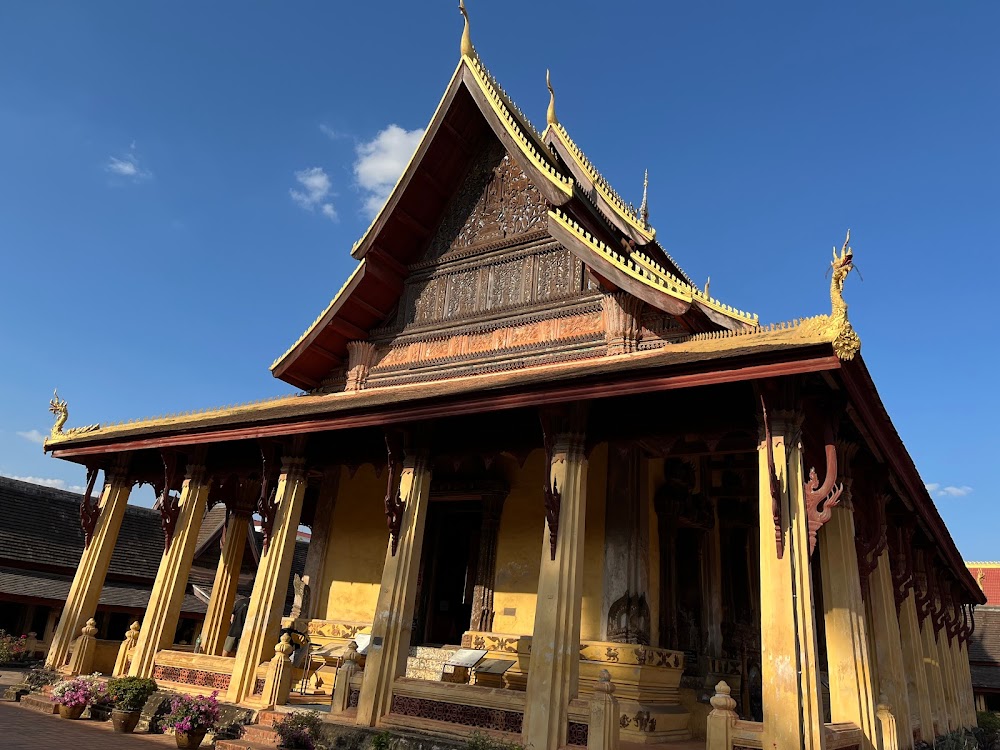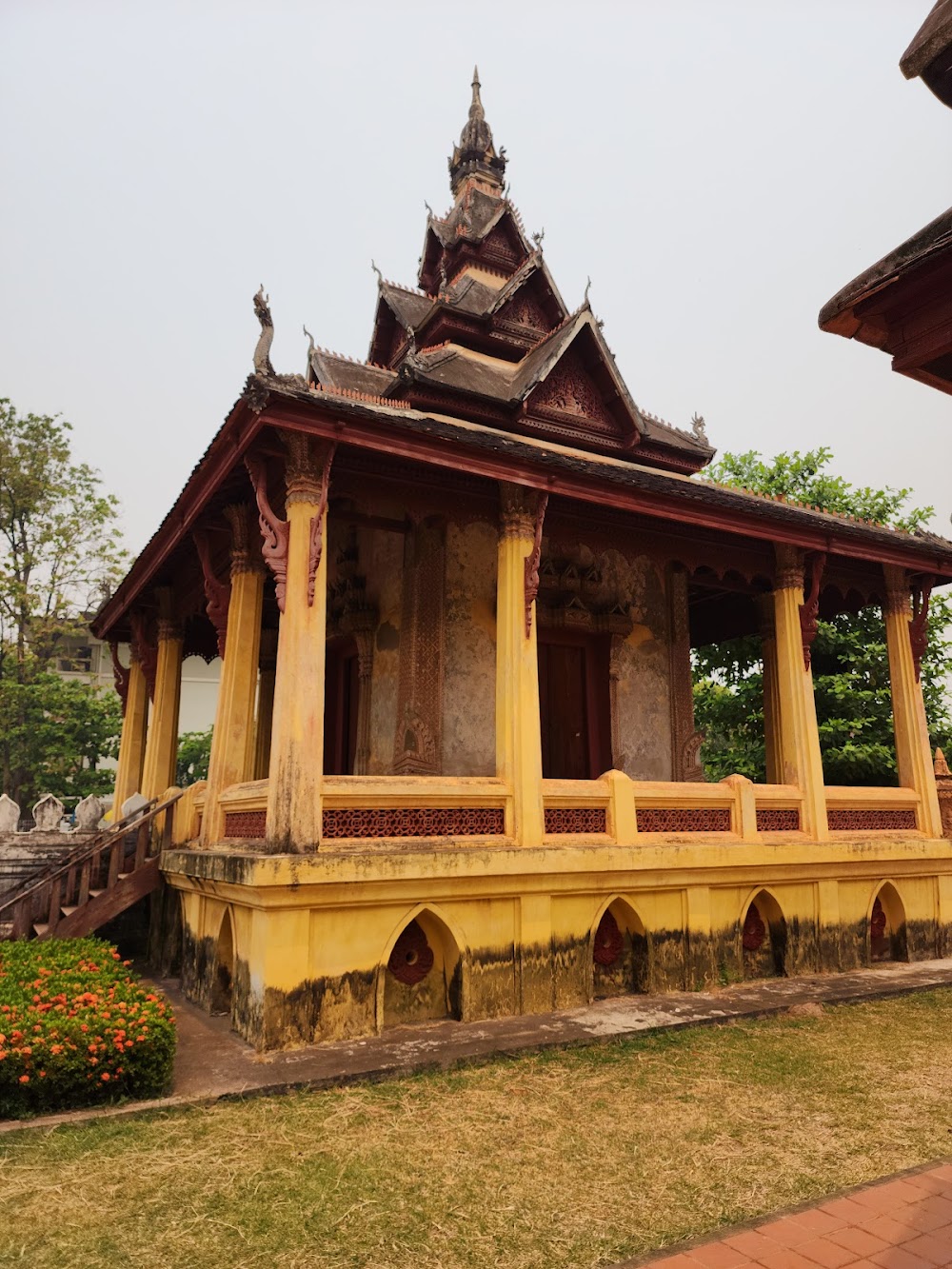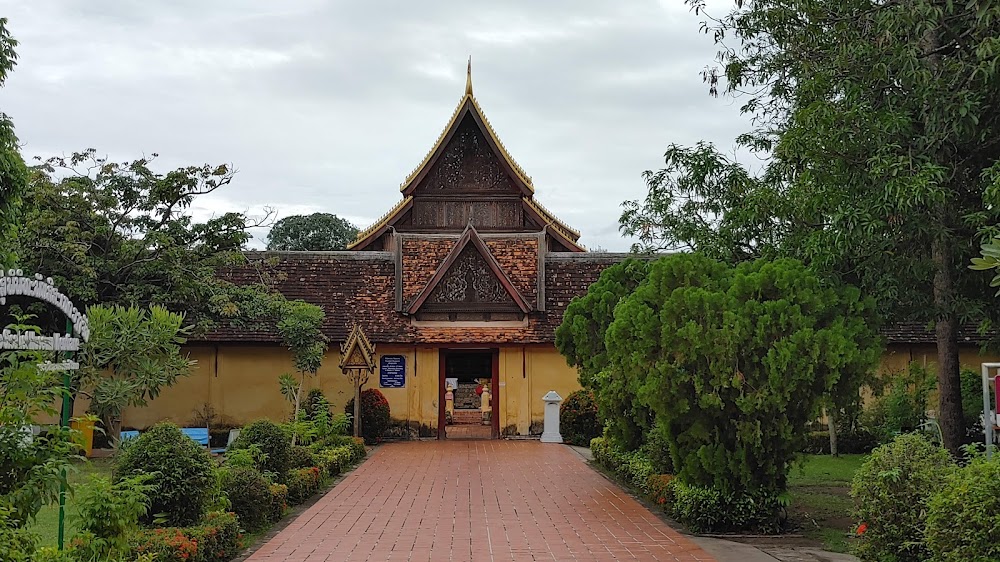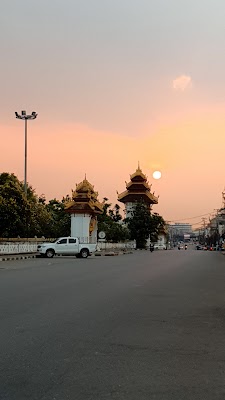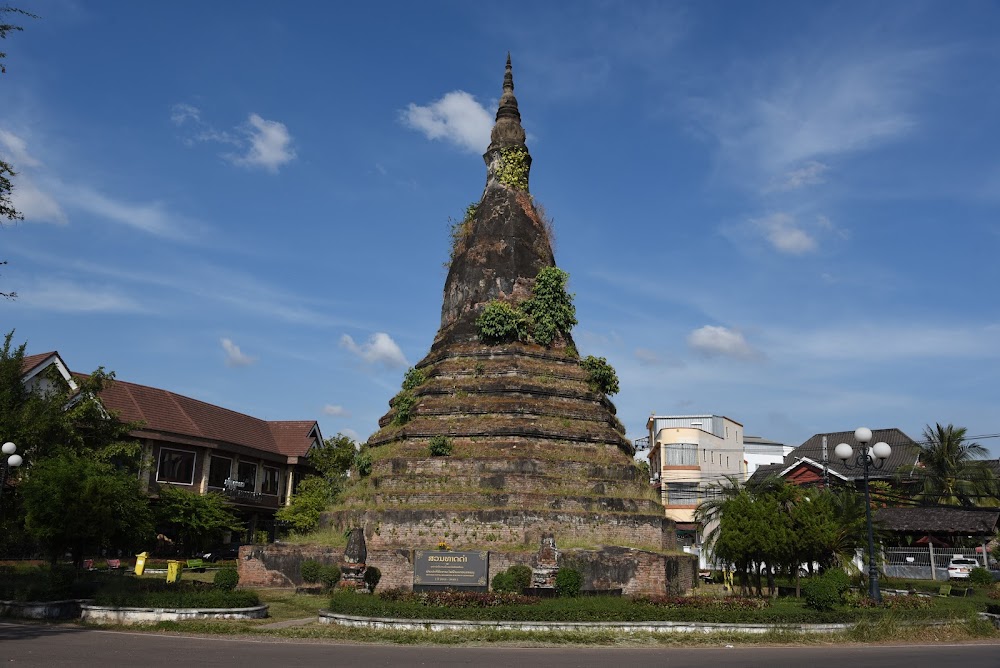Wat Si Saket (ວັດສີສະເກດ)
Related Places
Overview
Wat Sisaket: A Jewel of Vientiane's Heritage
Overview
Wat Sisaket is a remarkable Buddhist temple nestled in the heart of Vientiane, the capital city of Laos. This historic site, built in the early 19th century, is celebrated for its unique Siamese architectural style and rich cultural significance that resonates with visitors from around the globe.
Historical Significance
Commissioned by King Anouvong (Chao Anou), the last monarch of the Kingdom of Vientiane, Wat Sisaket was constructed in 1818 during a period of Siamese (modern-day Thailand) influence. This influence is evident in the temple's design, which features a striking five-tiered roof and a cloister wall adorned with thousands of Buddha images. Remarkably, Wat Sisaket survived the Siamese-Lao war of 1827-1828—an event that devastated much of Vientiane—thanks to its Siamese architectural style. The invaders spared the temple, recognizing its resemblance to their own sacred structures, thus establishing its significance as a symbol of peace and endurance in Lao culture.
Architectural Features
Constructed using traditional materials and techniques, Wat Sisaket's main structure, known as the sim or ordination hall, is built from timber and bricks, topped with terracotta tiles. Inside the sim, visitors can admire beautiful murals that depict scenes from the Jataka tales, which recount the Buddha's previous lives. Although these murals have faded over time, they provide a captivating glimpse into Laos's rich artistic heritage.
The Cloister Wall
Encircling the sim is a distinctive cloister wall, which is a highlight of Wat Sisaket. This wall is unique for its alcoves, housing over 2,000 silver and ceramic Buddha statues. In addition, more than 300 seated Buddha statues, crafted from wood, stone, and bronze, are strategically placed around the courtyard, each exuding serene expressions and intricate details that captivate visitors.
Exhibits and Learning
Within the temple grounds, a small museum showcases religious artifacts, ancient scriptures, and additional Buddha images. The library, or "ho trai," is an elevated structure designed to protect sacred palm-leaf manuscripts from flooding and pests, highlighting the temple's commitment to preserving its spiritual heritage.
Living Tradition
Today, Wat Sisaket remains an active place of worship, serving as a center for learning and meditation. Monks residing at the temple participate in daily rituals and ceremonies, offering spiritual insight and guidance to the local community. The temple also hosts significant Lao Buddhist festivals, including Boun Pha Vet and Pi Mai Lao (Lao New Year), making it a vibrant part of the cultural calendar.
Preservation Efforts
Efforts to restore and maintain Wat Sisaket are ongoing, supported by the Lao government and international organizations. These initiatives aim to preserve the temple's historical and cultural integrity, ensuring that future generations can appreciate and learn from this treasured monument—a testament to the resilience and enduring spirit of the Laotian people.
Visiting Wat Sisaket offers not just a glimpse into Laos's past but also an opportunity to engage with its living traditions, making it a must-see destination for travelers exploring Vientiane.


